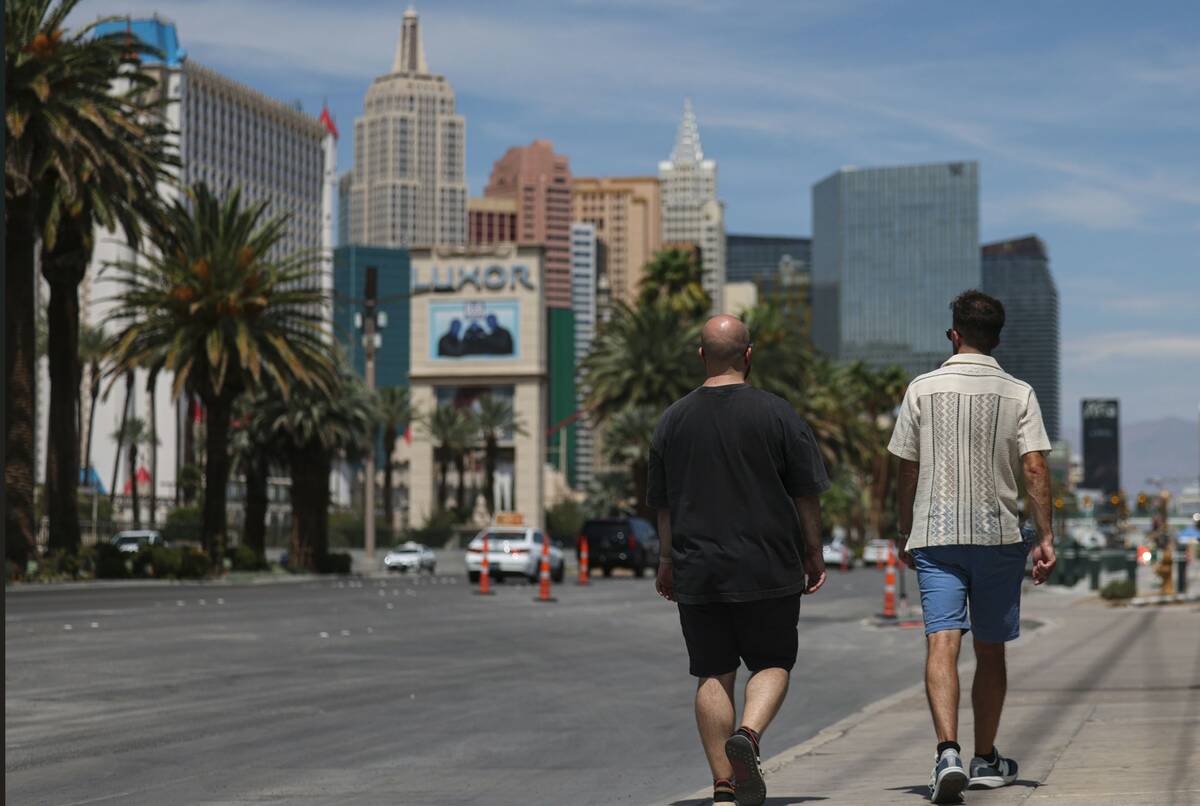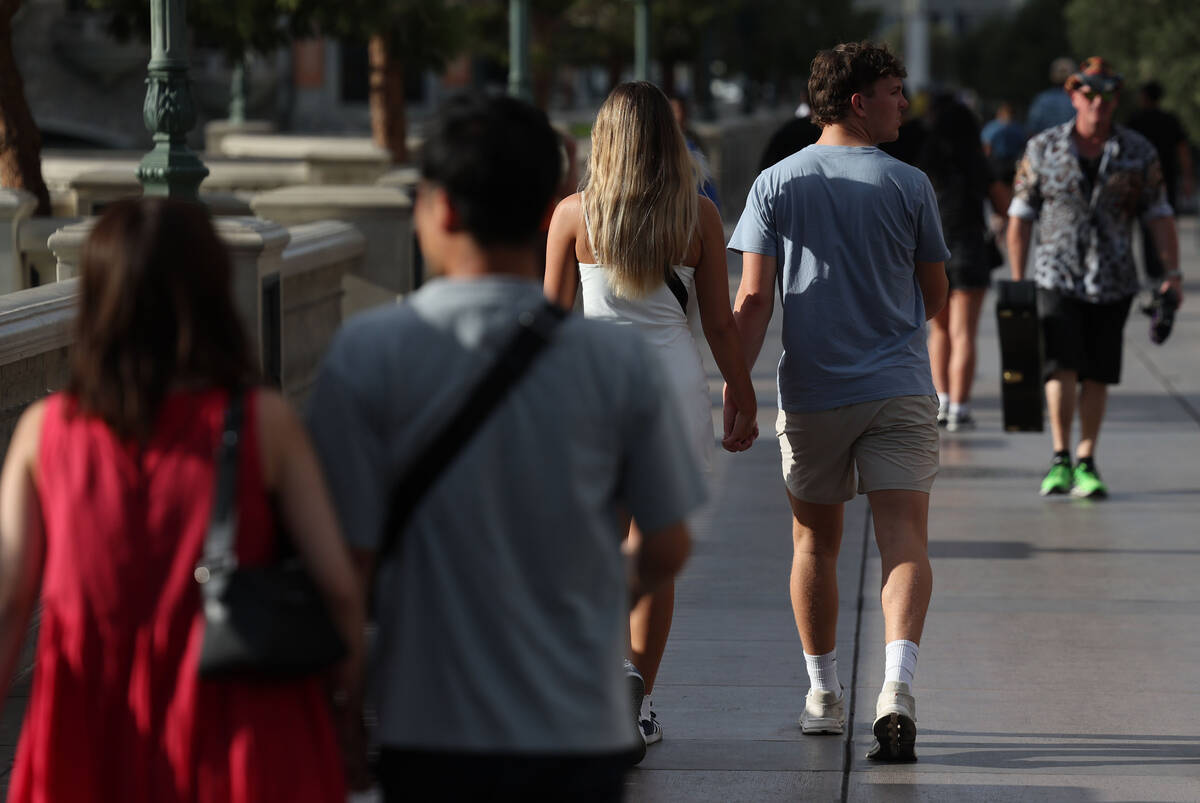How is Las Vegas’ casino revenue up while visitation is down?
The number of tourists visiting Las Vegas fell this summer, but gaming revenue increased for many casino operators throughout the valley.
Nearly 3,000 miles away in Atlantic City, the story was comparable as visitation to the seaside resort was essentially flat, but casinos had their best summer in over a decade.
The two major U.S. gaming markets highlight a larger national trend in which casinos are generating more money even as fewer customers walk through the doors.
Year-to-date, commercial gambling revenue is up roughly 8 percent, according to the American Gaming Association, despite uneven tourism numbers across the country.
How Las Vegas, Atlantic City fared this summer
Locally, 10 percent fewer visitors came to the city in June, July and August of this year compared to 2024, according to data from the Las Vegas Convention and Visitors Authority. Over the same three months, gambling revenue increased year-over-year 3.9 percent on the Strip, 7.3 percent downtown and 4 percent in Clark County, according to the Nevada Gaming Control Board.
In Atlantic City, the country’s second-largest casino market, visitor volume through the toll plaza of the Atlantic City Expressway was up 0.6 percent this summer compared to the prior year. Meanwhile, in-person gambling revenue reported by the city’s nine casinos was up 5.5 percent, according to the New Jersey Division of Gaming Enforcement.
Through July, year-to-date gambling revenue is up in 37 of the 38 U.S. jurisdictions where commercial gambling is permitted, based on the AGA’s Commercial Gaming Revenue Tracker.
Domestic travel saw a notable uptick this summer, with over 70 percent of Americans planning vacations, according to Bank of America’s 2025 Summer Travel Trends Survey. Conversely, international visitation to the U.S. declined by 3.1 percent in July, marking the fourth consecutive month of decreases, as reported by the U.S. Travel Association.
This contrast may help explain why Las Vegas experienced a drop in visitors, while destinations like Atlantic City, with their regional appeal, remained more resilient.
What’s behind the apparent contradiction of more revenue and fewer customers?
Experts say the dynamic reflects the resilience of the gaming industry, the influence of high-spend casino patrons, post-COVID operational adaptations, and differences in market makeup, such as Vegas’ reliance on international travelers versus Atlantic City’s drive-in base.
While national gaming numbers are trending upward, Las Vegas is showing signs of strain. The dip in Strip visitation this summer, even as casino revenue held steady, is a gap that reflects who is, and is not, spending.
“Roughly 80 percent of casino revenue comes from about 20 percent of players,” said Anthony Lucas, a professor of casino management at UNLV and former Las Vegas casino executive. “Wealthier people are less concerned about things like inflation.”
Strip casino executives have acknowledged as much in quarterly earnings calls this year. MGM Resorts International and Caesars Entertainment, the Strip’s two largest operators, have both said that high-end properties in their respective portfolios are performing well, but the pinch is being felt at the mid- to low-tier properties.
Lucas pointed to consumer confidence trends as a factor, with everyday travelers being more likely to cut back on discretionary spending when budgets feel squeezed. But the high-value gamblers driving Strip revenue are less price-sensitive.
The result is a paradox in which casinos can still post strong gaming figures even as fewer people pass through the doors.
‘Las Vegas is resilient’
Lucas said he sees no reason for concern in the Las Vegas market. Yet.
“A sustained combination of a drop in tourism volume and gaming revenue would maybe cause me to be a little bit more concerned,” he said.
Atlantic City, meanwhile, tells a slightly different version of the same story. Jane Bokunewicz, director of Stockton University’s Lloyd D. Levenson Institute of Gaming, Hospitality and Tourism, said the market’s reliance on regional, drive-in customers gave it some insulation from the international travel slowdown that hit Las Vegas.
“What we are seeing in Atlantic City is somewhat similar to Las Vegas in that gaming revenues increased disproportionately to visitor volumes,” Bokunewicz said. “But Atlantic City typically serves a drive-in/regional patron, and so was insulated from recent impacts on international travel. This allowed the disproportionate relationship between visitation and revenue to result in greater gains year-over-year.”
Nationally, New Jersey’s 8.8 percent year-over-year growth is on trend with other top-earning states, while Nevada, which is up 1.45 percent statewide through August, is an outlier despite being the country’s largest casino market.
Still, even with Nevada lagging behind other top-earning states, experts say the market’s long-term fundamentals remain strong.
“Nobody likes a downturn,” Lucas said. “But everything breathes. If something expands, it eventually has to contract. (Las Vegas) is going to have cycles like this. We’ve had them in the past, we’ve had recoveries, and we always come back. Las Vegas is one of the most resilient economies, and gaming is one of the most resilient industries I’ve ever seen. So, I’m not super worried.”
Contact David Danzis at ddanzis@reviewjournal.com or 702-383-0378. Follow @AC2Vegas_Danzis on X.




















